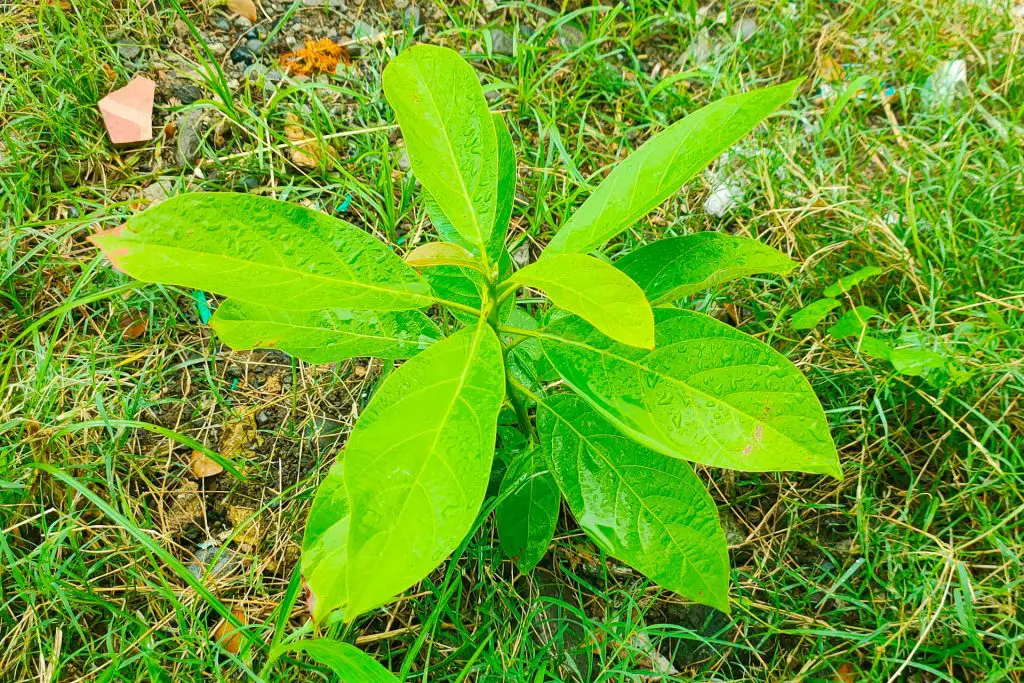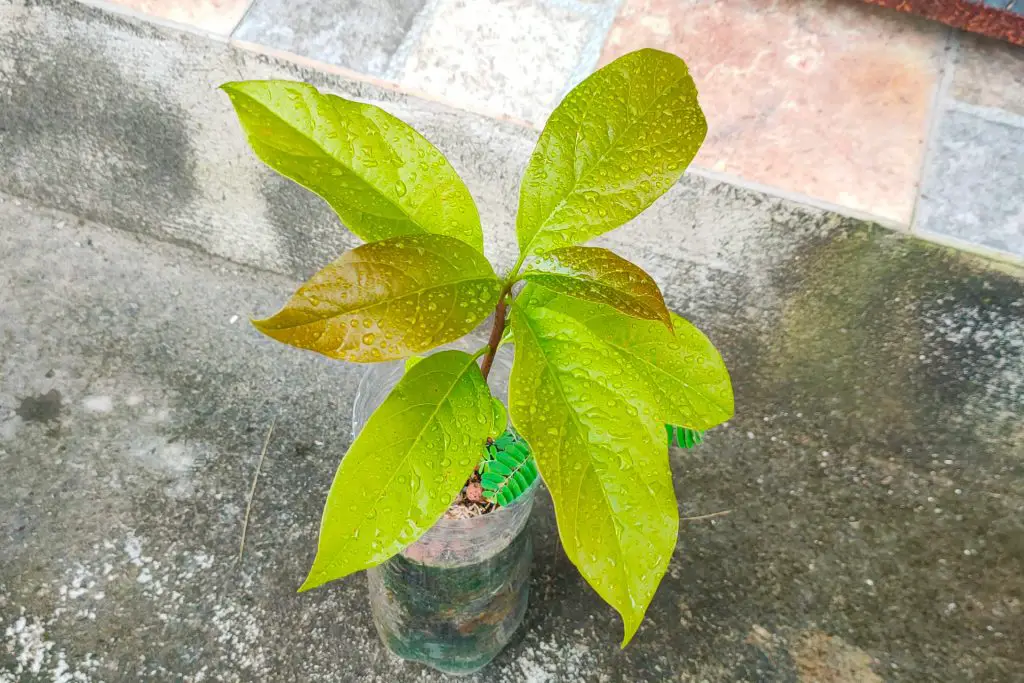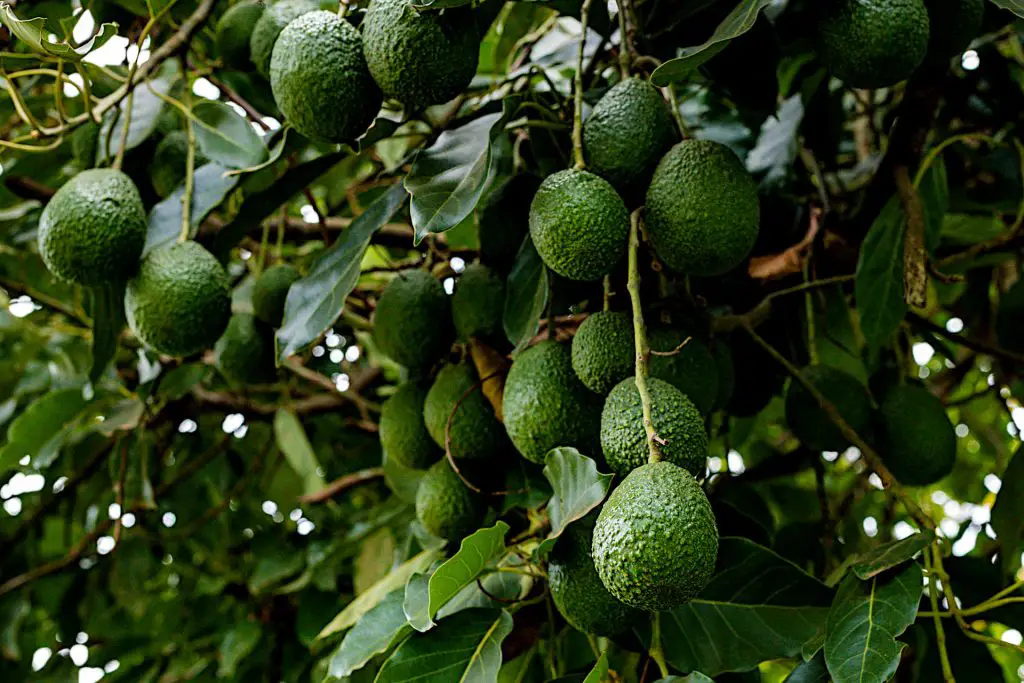Fertilizer for Avocado Trees – Avocado Tree Fertilization Guide
The avocado tree is native to Central and South America and has been cultivated for centuries. It produces a nutrient-dense fruit that is often eaten on its own or used as a key ingredient in various dishes. In terms of fertilizer for avocado trees, while the tree itself is relatively easy to grow, and they do not need a lot of nutrients, there are some certain essential nutrients required for the tree to grow properly and thrive.
Having the correct ratio of the big three nutrients nitrogen, phosphorus, and potassium, is important to the success of growing avocado trees. However, certain micro-nutrients such as boron also play a key role in enabling the trees to achieve the best possible fruit yield. In this article, we will discuss what nutrients avocados need and how and when to supply them.
Fertilizers can play an important role in the growth and maximization of fruit production of your avocado trees. Synthetic fertilizers and organic materials can be used to supply the required nutrients as well as amendments to improve soil structure to create stronger root systems.
The Basic Nutrient Requirments of Avocado Trees

The nutrient requirements of avocado plants and citrus trees are very comparable to one another. Avocados, on the other hand, have a significantly more difficult time growing and producing fruit compared to citrus fruits. As a result, it is essential to understand how nutrients influence the development and production of avocado trees.
The main nutrients required for avocado tree growth are nitrogen, phosphorus, and potassium. The most important macronutrients in the soil are N (nitrogen), P (phosphorus), and K (potassium). Plants need nitrogen as a source of energy, protein, nucleic acids, and chlorophyll. Phosphorus is necessary for cell division and growth, while potassium helps control the flow of water vapor, oxygen, and carbon dioxide through the plant. Both plant development and yield are negatively impacted when there is an insufficient supply of potassium or when it is not provided in sufficient levels.
When it comes to NPK levels, it is important to make sure that you are not over- or under-fertilizing your avocado plants. Too much of any one nutrient can be detrimental to the plant. For example, too much nitrogen can lead to leaf burn, while too much phosphorus can lead to root problems.
The best way to ensure that you are providing the right NPK levels for your avocado plants is to get a soil test done. This will tell you the exact levels of each nutrient in your soil, and then you can adjust your fertilizer accordingly.
Nitrogen Requirements By Tree Age
| Avocado Tree Age | Amount of Nitrogen lbs per tree |
|---|---|
| 1 | 0.1 |
| 2 | 0.2 |
| 3 | 0.33 |
| 4 | 0.5 |
| 5 | 1 |
| Over 6 | 1.5 |
Boron Micronutrient
Boron is a micro-nutrient and is an essential element for a wide variety of plant processes, such as the formation and stability of cell walls, the upkeep of the structural and functional integrity of biological membranes, the passage of sugars/ energy into branches, leaves as well as being crucial for pollination and seed set. As such boron also plays a key role in the development of the avocado trees.
This is why it is important to select a fertilizer that contains boron – to ensure that your avocado tree is getting the essential nutrients it needs to grow and produce healthy fruit.
Not only does boron help with the growth of the avocado tree, but it also impacts the fruit itself. For example, boron is known to improve the flavor of avocado fruit, as well as increase the shelf life.
You can typically find boron in commercial fertilizers, but it can also be added to your compost pile if you are making your compost at home.
Zinc Micronutrient
Zinc is a micronutrient that is essential for the growth and development of avocado trees. It is involved in many biochemical processes such as enzyme production, and carbohydrate and protein synthesis. Zinc plays an important role in the development of fruit quality, size, and yield.
Avocado trees are susceptible to zinc deficiency. The fruit that is produced by trees that are zinc deficient is typically smaller and rounder than the fruit that healthy trees produce, which is typically larger and more ‘pear-shaped’. This can have a significant impact on yield, as well as the overall size and appearance of the fruit.
The most efficient way to add zinc is through fertilizer. Using a zinc-rich fertilizer will make a huge difference in establishing and maintaining a tree’s health and fertility.
Ground Preparation Before Planting – Applying the Right Amendments

The success or failure of your avocado trees can depend on the existing soil conditions quality and how you prepare it. You need to check the pH level, and existing nutrient levels, and assess the soil structure to determine the best fertilizer and amendments to use.
Soil Type and Structure
The success or failure of your avocado trees can depend on the existing soil quality and how you prepare it. If you have clay-based soil, then you need to add organic matter such as composted manure, peat moss, leaf mold, etc., to improve its structure, improve soil drainage and increase water retention.
If you are planting an avocado tree in sandy soil, then you should apply some type of fertilizer for better growth.
You will also want to make sure that you plant your avocado trees in direct sunlight so they get enough light. This is important because if you don’t, they won’t grow well.
Soil pH Levels
If you want to grow healthy avocado trees, it’s important to make sure the pH levels of your soil are in the right range. Avocados are extremely delicate plants that cannot tolerate alkaline soils. Soils with a high pH inhibit the avocado trees’ ability to absorb iron and zinc, and as a result, they will suffer.
Most avocado trees prefer slightly acidic soils with a pH of 6.0 to 7.0. If your soil’s pH level is above this, instead of attempting to adjust it after the tree has been planted, it is far simpler to adjust it before planting the tree.
To find out the pH level of your soil, you’ll need to do a soil test. You can purchase a testing kit either online, at your local nursery or garden center, or you can send a sample of your soil to a testing laboratory. Once you know the pH level of your soil, you can take steps to adjust it if necessary.
If your soil is too alkaline, you can amend it by adding sulfur or other organic matter such as ericaceous compost, pin needles, or vinegar. It is important to test your soil at least twice a year to monitor pH and nutrient levels.
Shallow Roots
When it comes to trees, most people think of them as needing deep roots to anchor them and ensure they get the nutrients they need. However, this isn’t always the case. Some trees, like avocado trees, have a shallow root structure. This can affect nutrient uptake and make them more susceptible to water stress because the top soil typically dries up far more quickly than the deeper soil below it.
Shallow roots can make it more difficult for trees to absorb nutrients. They may not be able to reach deep into the soil to access the nutrients they need. This can lead to nutrient deficiencies and make the tree more susceptible to stress and disease.
Water stress can be a big concern for shallow-rooted trees. They can’t tap into deep reserves of water, so they’re more likely to suffer during times of drought. This can lead to leaf drop, wilting, and eventually death.
While shallow roots have some disadvantages, they also have some advantages. They’re more able to tolerate compacted soils and can often survive in areas where deep-rooted trees would struggle
How to Apply Fertilizer to Your Trees

There are quite a few different options that you can use when applying fertilizer to your avocado trees. Choosing the best method can come down to tree age, soil condition, and cost.
Granular Fertilizer
Granular fertilizers have several advantages over other types of fertilizers when it comes to feeding avocado trees. For one, granular fertilizers have a much longer shelf life than other types of fertilizers. Additionally, the surface feeder roots of avocado trees can take up nutrients from granular fertilizers more effectively than from other methods of fertilization.
Slow-release granular fertilizers are also ideal for avocado trees because they provide a steadier supply of nutrients over time. This is especially beneficial during periods of active growth when avocado trees need a higher ratio of nitrogen to produce new leaves and fruit.
Finally, granular fertilizers are generally much cheaper than liquid fertilizers. This makes them an excellent choice for growers who are looking to save money on their tree-care costs.
Granular fertilizer can be spread by hand or by using a broadcast spreader. As most of the feeder roots are in the top six to eight inches of soil the nutrients don’t have to penetrate too deeply into the soil. However, you have to be careful to apply the fertilizer evenly.
Liquid Fertilizer
Liquid fertilizers are also a common option. Not only are they simple to combine, but they also guarantee uniform distribution of nutrients. They are also exceptionally adaptable since they can be rubbed onto the leaves of plants to deliver a concentrated amount of nutrition to the plants in a short amount of time. The use of liquid fertilizers sprayed directly onto foliage will help avocado plants to have a more successful time absorbing this essential mineral.
Organic Fertilizer
Commercial synthetic fertilizers generally contain higher concentrations of nutrients than organic fertilizers. The disadvantage is that this can lead to the possibility of fertilizer burn if not used correctly.
An alternative can be organic fertilizer. The advantage of natural organic fertilizer is that they have natural slow release mechanisms which should result in avoiding the possibility of burn. A further advantage is, that compared to synthetic fertilizers they are much cheaper and as organic material, they can substantially improve the soil structure.
The disadvantage is that they may not possess all the required micro-nutrients and salts that avocado trees require to produce the best and maximum fruit yields.
Fertilizer Spikes
Fertilizer spikes are an effective way of applying fertilizer and ensuring that the nutrients are released gradually. This is important, as avocado trees need a steady supply of nutrients to thrive.
One of the main advantages of spikes is that you can more easily control the fertilizer supply so that you can be sure that the avocado tree is getting the nutrients it needs without overdoing it.
Spikes are easy to use and can be inserted into the soil around the tree, near the drip line. For best results, fertilizer spikes should be used twice a year – once in the spring and once in the fall.
There are a couple of things to keep in mind when using fertilizer spikes. Firstly, make sure that the nutrient content is right for avocado trees. Secondly, when inserting the spikes into the soil, take care not to damage the roots.
Timing of Fertilizer Application.

Mature Avocado Trees
The are differences in the fertilizing regimes of young avocado trees and mature trees. Although mature avocado trees require more nitrogen this can be applied less frequently. In general with mature trees, you would fertilize two to three times a year, in spring, in fall, and, depending on the soil nutrient levels, in summer. A mature tree normally requires at least 1½ lbs of nitrogen a year. (see table above)
Young Avocado Trees
With the application of fertilizer to young trees, caution should be exercised. Getting the right amount of nitrogen is crucial for the development of the tree. Under-fertilization will result in poor growth, while over-fertilization might cause the roots to become damaged. During the growing season, it is common practice to apply fertilizer to young trees every four to six weeks between spring and fall before the trees fall dormant in late fall or early winter.[1]
Fertilizing When the Tree Fruits
It’s common for avocado trees to experience sunburn when they first start fruiting. This is because the tree’s canopy hasn’t fully developed yet, so the fruit is more exposed to the sun. If you notice your avocado tree starting to fruit, it’s a good idea to add some additional fertilizer to help offset the sunburn.
Fertilizer can help an avocado tree recover from sunburn damage and produce healthier fruit. Look for a fertilizer that contains nitrogen, phosphorus, and potassium. These nutrients will help the tree develop a strong root system and promote healthy growth. Apply the fertilizer around the base of the tree, taking care not to get any on the leaves or fruit.
Summary: Fertilizer for Avocado Trees
Although avocado trees are not that complex to grow, if you want to achieve good fruit yields then you have to ensure that the tree has the right nutrients and growing conditions.
There are a few key nutrients that avocado plants need to thrive properly. Plenty of nitrogen as well as phosphorous, as are the micro-nutrients zinc, iron, and boron are all essential if you are looking for good fruit development.
You can either supply these nutrients through commercial fertilizers or organic material such as compost. Citrus tree fertilizers are often suggested and the nutrient ratios required are indeed similar. However, Just make sure that you are not over- or under-fertilizing, and that you have enough of the right nutrients in your soil for maximum fertility.
Notes:
- University of California, Gary S. Bender: Avocado Fertilization- Fertilization Book
